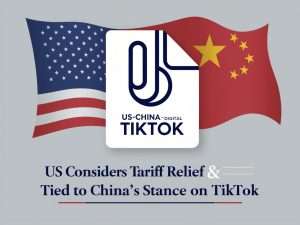Introduction: Capitalizing on China’s Market Potential
The Rising Global Economic Influence of China
Why is China’s booming economy a golden opportunity for SMEs?
China’s economic ascent has been nothing short of phenomenal, reshaping the global economic landscape. It’s not just the sheer size of its economy but also the speed of growth that makes China a focal point for international business. In recent years, China has consistently outpaced global growth averages, a trend that’s projected to continue. For SMEs, this rapid expansion isn’t just a headline; it’s a gateway to unprecedented opportunities.
Essential Statistics: China’s Market Size, Growth Rate, and SME Relevance
Consider these numbers: China’s GDP is forecasted to grow at an average of 6-7% annually over the next decade, significantly higher than the global average. This growth isn’t just in traditional sectors; new industries are emerging, driven by innovation and technology. But what does this mean for SMEs? Simply put, a vibrant and growing economy creates a demand surge across various sectors, from consumer goods to tech services, offering a fertile ground for diverse business activities.
The Unique Advantage for SMEs in Today’s Chinese Market
What sets SMEs apart in China is their agility and innovation. Unlike larger corporations, SMEs can quickly adapt to market changes, a critical advantage in China’s fast-evolving landscape. Additionally, the Chinese government’s supportive policies towards SMEs, including tax breaks and incentives for innovation, make it an even more attractive destination.
Decoding the Chinese Economic Phenomenon

Detailed Analysis of China’s GDP Growth Trends and Forecasts
China’s GDP growth isn’t just impressive in its pace but also in its resilience. Despite global economic downturns, China has maintained a steady growth trajectory. This resilience stems from a robust domestic market and a strong focus on export-driven growth. For SMEs, understanding these trends isn’t just about numbers; it’s about recognizing the stability and potential of the Chinese market.
Sector-wise Opportunities: Highlighting High-Growth Industries for SMEs
Certain sectors in China are experiencing explosive growth, offering lucrative opportunities for SMEs. For instance, the tech industry, particularly areas like AI, fintech, and green tech, is booming. Another high-growth sector is consumer goods, driven by China’s expanding middle class with increasing disposable incomes. SMEs that can tap into these sectors with innovative products and services have a lot to gain.
Demographic Dividends: Understanding China’s Consumer Base
China’s vast and diverse consumer market is a goldmine for SMEs. It’s not just about the sheer number of consumers but also about their evolving preferences. Younger Chinese consumers, in particular, are tech-savvy and open to new and innovative products. SMEs that understand and cater to these changing consumer dynamics can carve out a significant niche in this vast market.
Strategic Market Entry for SMEs in China

Mastering Business Etiquette and Cultural Norms in China
How can understanding China’s unique business culture be a game-changer for SMEs?
In the Chinese business world, relationships and trust are paramount. It’s crucial for SMEs to grasp the subtleties of Chinese business etiquette. For instance, the concept of “Guanxi,” or personal connections, can be pivotal in negotiations. Emphasizing respect, patience, and formality in business interactions is not just good manners; it’s a strategic necessity. Additionally, understanding the non-verbal cues and contextual communication prevalent in Chinese culture can significantly aid in building successful business relationships.
Legal Landscape: A Comprehensive Guide to Chinese Business Laws and Regulations
Navigating China’s legal system can be daunting for foreign SMEs. However, a well-informed approach to China’s regulatory environment is critical. This includes understanding the nuances of contract law, intellectual property rights, and compliance standards. For example, China’s new Foreign Investment Law, implemented in 2020, provides a more transparent and fair environment for foreign investors. Familiarizing with such legal frameworks can protect SMEs from potential legal pitfalls and streamline their market entry process.
Case Study Analysis of Successful SME Market Entries
Let’s take the example of a European SME that successfully entered the Chinese market by partnering with local distributors. The key to their success was a well-researched market entry strategy that included localization of their products to meet Chinese consumer preferences and leveraging local partnerships for distribution and marketing. This case highlights the importance of a strategic approach tailored to the unique dynamics of the Chinese market.
Leveraging China’s Digital Ecosystem

In-Depth Look at China’s E-Commerce Platforms and Strategies
Why is China’s e-commerce landscape a goldmine for SMEs?
China’s e-commerce market, the largest in the world, is spearheaded by platforms like Alibaba, JD.com, and Pinduoduo. These
platforms not only offer a massive consumer base but also innovative features like live streaming and social commerce, which are revolutionizing online sales. For SMEs, leveraging these platforms means accessing a vast and engaged audience, along with cutting-edge e-commerce tools. It’s essential to understand each platform’s unique characteristics and user demographics to develop tailored e-commerce strategies.
Maximizing Social Media Impact: WeChat, Weibo, and Beyond
How can SMEs harness the power of China’s social media landscape?
In China, social media platforms like WeChat and Weibo are not just communication tools; they are integral to the digital lifestyle. WeChat, for instance, is a one-stop-shop for everything from messaging to shopping and payments. For SMEs, establishing a presence on these platforms can be a game-changer. This involves creating engaging content, utilizing WeChat mini-programs for e-commerce, and leveraging KOLs (Key Opinion Leaders) for brand promotion. By tapping into these platforms, SMEs can significantly enhance their brand visibility and customer engagement in the Chinese market.
Digital Marketing Case Studies: SMEs Doing it Right in China
Consider the success story of a small skincare brand that made a big splash in China’s digital space. By utilizing targeted advertising on platforms like Weibo and collaborating with popular beauty bloggers, they were able to create a strong brand presence. Their strategy of integrating user-generated content and influencer marketing resulted in high engagement rates and a substantial increase in sales. This case exemplifies the effectiveness of a well-crafted digital marketing strategy in China’s dynamic online ecosystem.
Real-World SME Successes in China: Analytical Case Studies

Dissecting Success Stories: Strategies and Tactics Used by SMEs
In China, SMEs have played a crucial role in the economy, particularly in high-tech industries. A significant example is the case of nine high-tech software SMEs that successfully navigated the challenges brought by the COVID-19 pandemic. These SMEs displayed remarkable resilience and adaptability in a difficult market environment. Their strategies included actively engaging with market risks, exploring new growth opportunities, and making critical decisions to sustain their businesses during the pandemic. These high-tech SMEs in China highlight the importance of innovation and strategic thinking in overcoming economic challenges and seizing market opportunities.
Learning from Failures: Common Pitfalls and How to Avoid Them
Despite the potential for success, high-tech SMEs in China face considerable challenges. The average life expectancy of these enterprises is only about 3.7 years, with many failing to survive beyond their first five years. This high failure rate can be attributed to limitations in resource accumulation, financial pressures, and difficulties in balancing innovation with limited resources. The case studies of these SMEs underscore the need for strategic choices that reflect the strengths of founding entrepreneurs, along with a focus on internal and external factors, including market changes and resilience building.
Navigating Challenges: Solutions for SMEs in China
Overcoming Language Barriers: Effective Communication Strategies
For SMEs entering the Chinese market, language and communication are significant hurdles. Successful companies often employ bilingual staff and invest in cultural and language training. This approach aids in navigating the complex business and cultural environment, ensuring more effective interactions and smoother business operations.
Intellectual Property in China: Protection and Enforcement for SMEs
Intellectual property protection is a key concern for SMEs in China. Understanding the legal landscape and utilizing available frameworks for IP protection is vital. This includes being aware of laws pertaining to patents, copyrights, and trademarks, and taking appropriate steps to enforce these rights.
Adapting to Chinese Consumer Behavior: Insights and Tactics
Adapting to the local market involves understanding and catering to the evolving preferences of Chinese consumers. This requires thorough market research and a strategy that incorporates local consumer trends and behaviors. Embracing digital platforms and e-commerce is particularly crucial in China, considering the significant role these channels play in the market.
Optimizing Logistics for SMEs: The Role of Freight Forwarding

In-Depth Guide to Logistics and Supply Chain Management in China
How can SMEs navigate the complexities of China’s logistics and supply chain?
In the fast-paced Chinese market, logistics and supply chain management are crucial for SMEs. The key to success lies in understanding the intricacies of China’s transportation infrastructure, regional differences, and customs regulations. Effective logistics management involves not just the efficient transportation of goods but also ensuring timely delivery and cost-effectiveness. SMEs must be aware of the various transportation modes available in China, including road, rail, air, and sea, and choose the right combination to maximize efficiency and minimize costs.
HAI International Holding Spotlight: How Freight Forwarders Facilitate SME Success
Freight forwarders like HAI International Holding play a pivotal role in streamlining logistics for SMEs. These companies specialize in managing the complexities of transportation, including customs clearance, warehousing, and cargo handling. By leveraging their expertise and networks, freight forwarders can provide SMEs with tailored solutions that optimize their supply chain, reduce lead times, and manage costs effectively. This can be particularly beneficial for SMEs new to the Chinese market, helping them navigate the logistical challenges and ensuring their products reach the market seamlessly.
Case Study: Streamlining Logistics for Competitive Advantage
A compelling example is a case study of a European SME that entered the Chinese market. This company faced challenges in managing its supply chain due to the vast geographical expanse and regulatory complexity of China. By partnering with a local freight forwarder, they were able to streamline their logistics, resulting in reduced shipping times and lower costs. The freight forwarder’s local knowledge and expertise in navigating Chinese customs and regulations were instrumental in this success, illustrating the value of such partnerships for SMEs operating in China.
Financial Insights for SMEs: Navigating China’s Economic Terrain

Taxation and Financial Incentives in China: A Detailed Guide
What are the key financial aspects SMEs need to understand in China?
Taxation and financial incentives are critical areas for SMEs operating in China. The Chinese government offers various incentives to promote SME growth, including tax reductions, subsidies, and grants, especially in high-tech and innovative sectors. Understanding these incentives and how to qualify for them can significantly impact an SME’s bottom line. Additionally, being aware of the tax obligations, including corporate income tax, VAT, and other local taxes, is crucial to ensure compliance and avoid penalties.
Risk Management and Financial Planning for SMEs in China
Effective risk management and financial planning are vital for SMEs to thrive in China’s dynamic economic environment. This involves not just managing operational risks but also financial risks such as currency fluctuations and credit risks. SMEs need to have a solid financial plan in place, including budgeting, forecasting, and cash flow management. It’s also essential to establish good relationships with local banks and financial institutions, as they can provide valuable support in terms of funding and financial services. Navigating these financial aspects carefully can help SMEs maintain stability and grow sustainably in the Chinese market.
Sustainability and Ethics: The New Frontiers in China

Environmental regulations and sustainable practices in China
Are you a Small and Medium Enterprise (SME) looking to make a positive impact in China’s market while staying profitable? With the growing emphasis on environmental sustainability, it is crucial to incorporate sustainable practices into your business operations.
China has implemented mandatory environmental regulations in order to tackle pollution and combat climate change. As a result, businesses, especially those in manufacturing sectors, must comply with these regulations to avoid penalties and maintain a positive brand image. One example is the requirement for plastic manufacturers to reduce their single-use plastic usage by 30%. By integrating sustainable practices such as reducing waste, optimizing energy consumption, and implementing eco-friendly manufacturing processes, SMEs can not only meet these regulations but also attract environmentally-conscious consumers.
Ethical business operations: Building a responsible SME brand in China
In today’s socially-aware market, ethics and responsible business practices are no longer optional – they are essential for creating a trustworthy and successful SME brand in China. Chinese consumers are increasingly valuing companies that demonstrate transparency, fairness, and ethical sourcing.
To build an ethical brand, SMEs need to focus on transparent communication with stakeholders, fair pricing, ethical sourcing of raw materials, and responsible production processes. By promoting values of integrity and social responsibility, SMEs can tap into the growing segment of Chinese consumers who prioritize ethical businesses. This is supported by a report from McKinsey, which states that 33% of Chinese consumers in the middle-class bracket consider ethics and transparency when making purchasing decisions.
Predicting the Future: Trends Shaping China’s Market

To stay ahead in China’s ever-evolving market, SMEs need to be proactive in identifying and adapting to emerging trends. There are two key elements that are shaping the market landscape – emerging technologies and consumer trends.
Emerging technologies and market trends SMEs should watch
To gain a competitive advantage, SMEs need to embrace emerging technologies that are reshaping various industries in China. Artificial Intelligence (AI), machine learning, Internet of Things (IoT), blockchain, and 5G are just a few examples of technologies that SMEs should keep an eye on. These technologies offer opportunities for SMEs to enhance their operations, improve efficiency, and reach a wider audience.
For instance, the use of digital platforms for advertisements and public relations has grown significantly in China. Giants like Baidu, Tencent, and Alibaba, with their combined user base of over 2.7 billion, provide SMEs with a vast market to target through tailored digital marketing strategies.
Consumer trends analysis: What’s next for China’s market?
Understanding consumer trends is crucial for SMEs aiming to meet the changing demands of Chinese consumers. One emerging trend is the focus on health and wellness. Chinese consumers are increasingly investing in health and fitness, leading to significant growth in the wearable device market, which saw a 45.8% increase in 2020. SMEs can cater to this trend by offering products or services that promote well-being and healthy lifestyles.
Another trend to consider is the importance of value-for-money offerings. In the wake of the COVID-19 pandemic, consumers in China are becoming more cost-conscious and seeking products and services that provide the best value for their money. SMEs can differentiate themselves by offering high-quality products at affordable prices, appealing to consumers looking for both quality and affordability.
By staying informed about emerging consumer trends, SMEs can tailor their strategies to align with the evolving Chinese market and ensure long-term success.
In conclusion, sustainability, ethics, and adaptability are key factors for SMEs looking to thrive in China’s competitive market. By incorporating sustainable practices, building an ethical brand, and staying abreast of emerging technologies and consumer trends, SMEs can position themselves for success in China’s dynamic business landscape.
Expert Conclusion: Synthesizing Insights for SME Entry into China
In the complexity and dynamism of China’s economic landscape, there exist both vast opportunities and considerable challenges for Small and Medium Enterprises (SMEs). As we synthesize our expert insights, it becomes clear that while China holds enormous growth potential, success is not automatic. The fundamental requirement for SMEs looking to venture into the Chinese market is an understanding of the key factors driving the business ecosystem and incorporating these into a versatile and dynamic business strategy.
Key Factors for SME Entry into China
- Market ResearchComprehensive market research is the bedrock of any successful SME Entry into China. Understanding the demand dynamics, consumer behavior, and local competitors are pivotal. For instance, a report by McKinsey reveals that by 2022, more than 75% of China’s urban consumers will earn 60,000 – 229,000 RMB per year, signifying an upsurge in purchasing power and demand for quality goods and services.
- Local PartneringSuccessful SMEs in China often leverage local partnerships to navigate intricacies unfamiliar to foreign enterprises, shredding cultural, legal, and language barriers. An example is the American giant, Starbucks, which entered a partnership agreement with Uni-President, China’s leading food retail company to enable its expansion strategy.
- Regulatory ComplianceChina’s regulatory terrain can be hazy and capricious. Therefore, observing strict regulatory compliance while maintaining flexibility towards abrupt policy changes is vital. McDonald’s illustrates this with its strategy of aligning with the China Food and Drug Administration’s regulations on food safety.
Actionable Steps and Final Advice for SMEs
As an SME, how can you transform this data into a viable entry strategy into China’s market? Here are some steps to follow:
- Establish your niche: Understand what unique product or service you can leverage in the constantly evolving Chinese market.
- Cater to Change: Don’t just observe the market, understand and adapt to it. China’s economy is driven by technological innovation and dynamic consumer trends.
- Legal Due Diligence: Understand the legal landscape, particularly regarding intellectual property rights. Seek legal counsel if necessary.
In conclusion, your entry into the Chinese market should be backed by a robust strategy adapted to the unique Chinese business environment. Remember, there’s no one-size-fits-all approach, but with the right understanding and strategy, success is within reach.
Frequently Asked Questions
Why should SMEs consider venturing into China's market?
China represents a vast market due to its massive population, rising middle class, and tech-integrated economy. As such, it presents a large customer base with robust purchasing potential.
What challenges could SMEs face in China?
SMEs could face regulatory hurdles, fierce competition from both local and international firms, cultural and linguistic barriers, and intellectual property risks.
How can these challenges be navigated?
By forming strategic partnerships with local firms, conducting in-depth market research, complying with local regulations, being flexible to changes, and protecting intellectual property.













